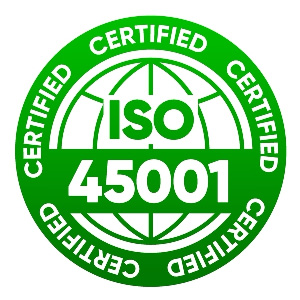First Aid Requirements and RIDDOR - Online Learning
- Duration: 15 mins
- Price 50 EURO
- Available as webinar: YES
- This course is fully approved by the Institution of Occupational Safety and Health (IOSH). Approvals: RoSPA, CPD
This First Aid Requirements and RIDDOR course is designed to be used by both managers and employers to help decide what first aid personnel they require. It also explains what has to be reported to RIDDOR, who should do this and how.
First aid can save lives and prevent minor injuries from becoming major ones, so having people with the right training in the right places is essential for the safety of your staff. RIDDOR stands for Reporting of Injuries, Diseases and Dangerous Occurrences Regulations 1995 - these govern the reporting of accidents at work.
According to the HSE, in 2015/16, 621,000 workers sustained an injury at work, yet only 72,702 injuries and workplace accidents were reported to RIDDOR. Not reporting an accident is a criminal offence and can cause major complications for businesses. Make sure you understand your responsibilities and know how to report to RIDDOR with our First Aid Requirements and RIDDOR Training.
This training programme is designed to be used in conjunction with our First Aid Appointed Person Training. This title is specifically for work environments with a relatively small number of employees, and where the risks are low.
Learning outcomes
- Learn about and work towards compliance with RIDDOR
- Learn how to gain an understanding of your own health and safety requirements for your workplace
- Understand RIDDOR and what injuries/illnesses must be reported and what doesn't need to be reported
Course contents
This training course is broken down into 2 sections
- 1 Health and Safety Requirements
- 2 What is RIDDOR?
SECTION 1
First aid is all about dealing with an illness or injury quickly. But the number of first aiders and their level of training depends on how much risk there is, who the employees are and how many people work in a particular area. In this section we look at how you decide what is needed in your workplace. And we look at what training they need.
SECTION 2
RIDDOR stands for the Reporting of Injuries, Diseases and Dangerous Occurrences Regulations. Certain injuries and illnesses MUST be reported to RIDDOR and in this section we look at what needs to be reported and how this is done. This section includes Reportable Injuries, Occupational Diseases and Dangerous Occurrences. See a list of reportable incidents.
This eLearning course only provides awareness education. Face to face training would be needed in addition in order to complete all-round skills and knowledge to be able to carry this forward practically in your organisation.
PC or mobile phone required for the theory part.
First Aid Requirements and RIDDOR certificate valid for 2 years.
Compliance
It's important that you comply with the law and know the ways in which it affects you and the way you work.
Reporting of Injuries, Diseases and Dangerous Occurrences Regulations 1995
RIDDOR is the Reporting of Injuries, Diseases and Dangerous Occurrences Regulations 1995. First Aid at work relates to The Health and Safety (First Aid) Regulations 1981.
Employers, those who are self-employed and those in control of premises are required by law to report serious workplace incidents (work-related deaths, major injuries, 7-day injuries (those causing more than seven days’ inability to carry out normal duties), work related diseases, and dangerous ‘near miss’ accidents).
In the event of serious work-related injury or death] the responsible person shall: (i)forthwith notify the relevant enforcing authority thereof by the quickest practicable means; and (ii) within 10 days send a report thereof to the relevant enforcing authority
Reporting of Injuries, Diseases and Dangerous Occurrences Regulations 1995, Section 3 (1)
 PT
PT
 EN
EN
 PL
PL
 RO
RO






